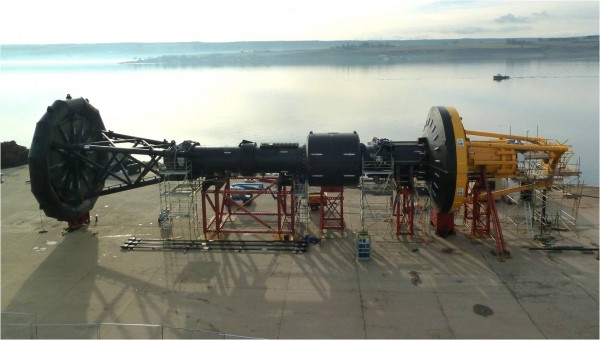Marine power development in the United States is in its infancy, but the Oregon Wave Energy Trust (OWET) is nudging it toward taking a grown-up step.
In pursuit of its goal of mining the Pacific Ocean for energy, the public-private partnership is aiming to create a grid-connected ocean power test facility. The envisioned Pacific Marine Energy Center (PMEC) would give the United States something that Europe already has at the operating European Marine Energy Centre (EMEC) in Scotland, and at Wave Hub, the four-plug socket in place off the Cornwall coast.

The Oregonians have a long way to go to catch up to the Europeans. Right now, OWET is seeking a consultant [PDF] to create a development plan for the PMEC, which is being undertaken with the Northwest National Marine Renewable Energy Center (NNMREC), a collaboration of Oregon State University and the University of Washington and one of only three federally sponsored ocean energy centers.
NNMREC is well along in a separate project to build a commercially available ocean test berth for marine power technologies off Yaquina Head, just north of Newport, Ore.; it’s expected to begin putting devices through their paces this summer. “With this facility, NNMREC will have a full suite of testing capabilities to support the advancement of small-scale and full-scale devices supported by both land based and in-ocean testing facilities,” OWET said.
All of which is tremendous, OWET said—but the NNMREC facility won’t be grid connected, and if marine power is ever going to become a reality on the West Coast, it needs the grid connection.
In its document soliciting consultant candidates, OWET said “the absence of standardized testing facilities has been identified as a key barrier to the development of the marine energy industry,” and argued that “Oregon is uniquely poised to fill the testing needs of the industry with its tremendous ocean energy resource, available infrastructure, technical expertise and political support.”
The vision for the Pacific Marine Energy Center is for four berths that could test devices of up to 1 megawatt apiece, all connected to the regional grid. “By offering numerous device-testing options in conjunction with transmission and grid interconnection infrastructure, PMEC will facilitate wave energy technologies’ progress from early-stage ocean testing through final demonstration for commercialization use,” OWET said.

OWET, which is dangling $100,000 for the development plan, didn’t hint at when it envisions the test center becoming a reality, but it did say that it will be developed in stages, and the description of those stages leaves the impression it will be a very long process.
“The initial stage would include site selection, design and installation of a single subsea transmission cable and shore-based infrastructure,” the OWET document reads. “This first cable could facilitate two 1MW devices. Because of the time required to obtain a FERC license, this first stage could include connecting the cable to a grid simulator, power analysis system and load dissipater for a full range of testing. The second stage would include the interconnection of the cable to the grid along with the necessary FERC license and additional shore-based infrastructure. The final stage would be to lay and interconnect a second cable in order to facilitate two additional 1MW devices or small arrays.”